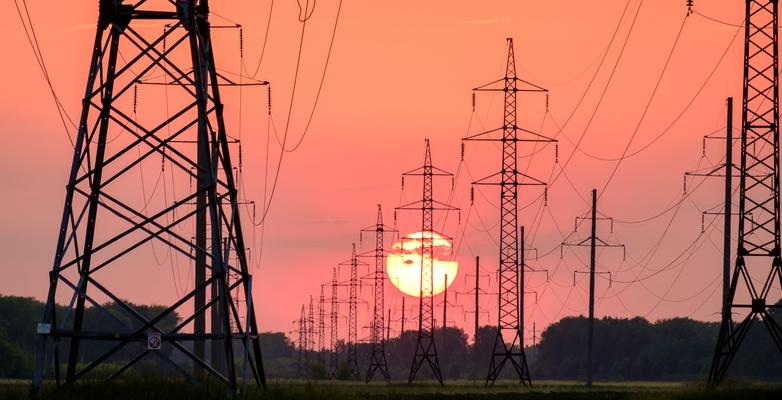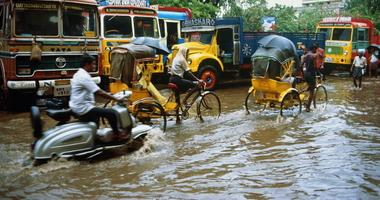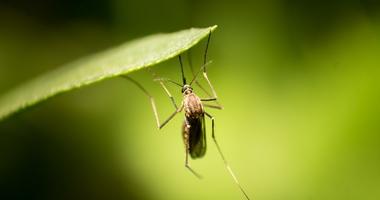
Our Grid Can’t Handle Climate Change
As the climate crisis intensifies, our grid has to change with it. The 150-year-old system is no longer effective and has to be updated to avoid potentially catastrophic blackouts.
Let’s be honest – a lot of things aren’t ready for the climate crisis. Our animals can’t evolve fast enough, our forests can’t recuperate, and our communities can’t adapt to the extreme storms. Our grid, unfortunately, is no different. We’re stuck in an archaic web of fossil fuels and coal that fails us time and time again.
Between intensifying storms that bring down trees and power lines, heat waves that cause AC usage to skyrocket, and flooding that damages power plants, one thing is clear: our grid is failing. And it’s simply not ready for the additional toll the climate crisis takes on our systems.
What is the grid and what does it do?
Simply put, the grid is anything that uses, transports, or produces electricity. That means your basics like power lines and power plants. Electricity production starts at power plants and wind and solar farms and then travels along hundreds of miles of wires to reach our businesses, homes, and devices. Electricity production can also start locally with rooftop and community solar or with nearby solar and wind systems, which require far fewer power lines when they’re located so close to where the electricity is needed.
What’s so bad about a blackout?
Things happen, and our grid fails. Disruptions like falling trees, extreme weather, and damage to power plants all contribute to blackouts and power outages.
Climate change, of course, is a driver of each of those disruptions. Between 2015 and 2020 blackouts more than doubled in the US. They aren’t just inconvenient – they cost American businesses billions of dollars each year.
It’s not just financial stress – blackouts can cause homes to lose access to running water, disrupt medical devices, hinder emergency communications, and cause refrigerated food to spoil.
Yes, energy consumption is increasing overall. But more importantly, the climate crisis is driving more extreme weather which means more heat-stressed power lines, fallen trees, flooding, and more AC usage. Combined together, the added stress on the aging infrastructure means that each storm or heat wave makes outages more likely.
How does climate change impact our grid?
As extreme storms become more and more common, so do power outages.
In 2017, Hurricane Maria shook Puerto Rico and showed just how vulnerable our current grid systems can be. The hurricane was responsible for nearly 3,000 deaths across the island and caused billions in damages to the grid. After nearly 11 months of blackouts, utilities were finally able to restore power – making it the longest blackout in US history. But Puerto Rico’s grid is still recovering. Five years later, millions of people still experience intermittent outages, and Hurricane Fiona caused another blackout for over 3 million people in September.
NOAA predicts that powerful storms like Maria are likely to become more frequent and more devastating as the climate crisis continues. Extreme winds take out power lines and storm surges waterlog power plants, putting our grid literally underwater. That means more blackouts, more repairs, and more lives lost while communities wait for the lights to come back on.
It’s not just the physical battering of our grids that leaves them vulnerable – sometimes it’s just communities using them when they need them most.
As heat waves continue to become increasingly lengthy and severe, communities turn to AC to keep temperatures livable and safe. However, those AC units all rely on the grid – and if that becomes overused and overstressed, it can shut down.
The consequences of blackouts during heat waves can be deadly. One 2021 study that looked at three major US cities found that a blackout during a heat wave could put at least two-thirds of the community at risk of heat exhaustion or heat stroke.
On its own, extreme heat is the deadliest form of extreme weather, with one study finding it responsible for about 12,000 deaths in the US each year. As energy demands rise and heat waves become more frequent, it becomes more and more likely that a major grid failure will coincide with a heat wave – making more deaths imminent.
>>Learn More: Just Say It: The Climate Crisis is Already Killing Us<<
What does this mean for marginalized communities?
Low-income and BIPOC communities have always borne the brunt of environmental injustices, and blackouts are no exception. Already more likely to live in inefficient and structurally unstable homes, they suffer the most during extreme weather events like heat waves or severe storms.
That also means their homes use excessive amounts of energy, leading to skyrocketing utility bills, especially during periods of extreme heat. A study by the American Council for an Energy-Efficient Economy found that the median energy burden borne by low-income households is three times higher than in non-low-income households.
However, their higher bills don’t mean they’re paying for quality or quantity. In Texas, one study showed that areas with high minority populations were more than four times more likely to suffer a blackout than majority white areas.
When the power goes out and the weather gets rough, low-income residents sometimes have nowhere to turn. They often can’t afford hotels to beat the heat or stay warm. One study found that cooling centers in three major cities, which can be life-saving for low-income or unhoused people, only held up to 2% of their population – that is, if they have power.
>>Learn More: It’s Not Just You: There are a Lot of Heatwaves<<
In 2021, we saw the deadly consequences of these injustices come to fruition in Texas during Winter Storm Uri. Already forced into areas more susceptible to extreme weather, low-income citizens bore the cold as the state prioritized power for areas near hospitals – a critical feature that many marginalized communities lack. The blackout proved deadly, and hypothermia caused two-thirds of the outage-related deaths.
What can we do?
The answer is simple: It’s time for us to kick the grid up a notch. Our grid needs to meet our needs today. That means being more resilient to the climate crisis and modernizing so we don’t make it worse.
We have to start investing in our grids. They have to be resilient AND clean – one or the other won’t get us very far. Energy sources like wind and solar, especially when paired with energy storage, can support our energy needs when we need it most.
Our infrastructure has to match the world we live in, and that means updating our plants to protect against ever-more-common extreme weather, flooding, drought, and wildfires. Investments in energy storage and emergency back-ups are necessary to keep clean energy online, and the initial cost pays off in terms of safety, reliability, and saved lives. Strengthening, or "hardening," the grid is also necessary. This can be done by burying vulnerable power lines and deploying advanced monitoring and AI systems to improve grid reliability and resiliency.
We also need to invest in microgrids: relatively compact grids with dedicated generation units that can be linked to, or operate independently from, the larger “macro” grid. Microgrids enable critical facilities such as hospitals, emergency response centers, campuses, and even neighborhoods to remain online in the event of a larger blackout. When paired with clean energy and storage systems, microgrids become highly resilient while simultaneously reducing greenhouse gas emissions.
According to the NC Clean Energy Technology center, in just the second quarter of 2022, there were $12.86 billion in modernization investments up for approval. Of that, only $478.7 million had been approved by regulators. We’re dragging our feet, and our communities are paying the price.
As always, that’s where community advocates come in.
Pushing your representatives to invest in your communities is a fantastic first step. Writing to your state delegates and federal representatives and encouraging clean energy projects is an excellent way to help push them along and nudge them toward the future.
The longer we wait, the longer we’re at risk. The future is coming whether we like it or not. Let’s bring a functioning grid with us.
Ready to get involved in the fight for a better tomorrow? Sign up for our email list today to receive the latest on the crisis and ways you can fight for a better, more sustainable tomorrow.




